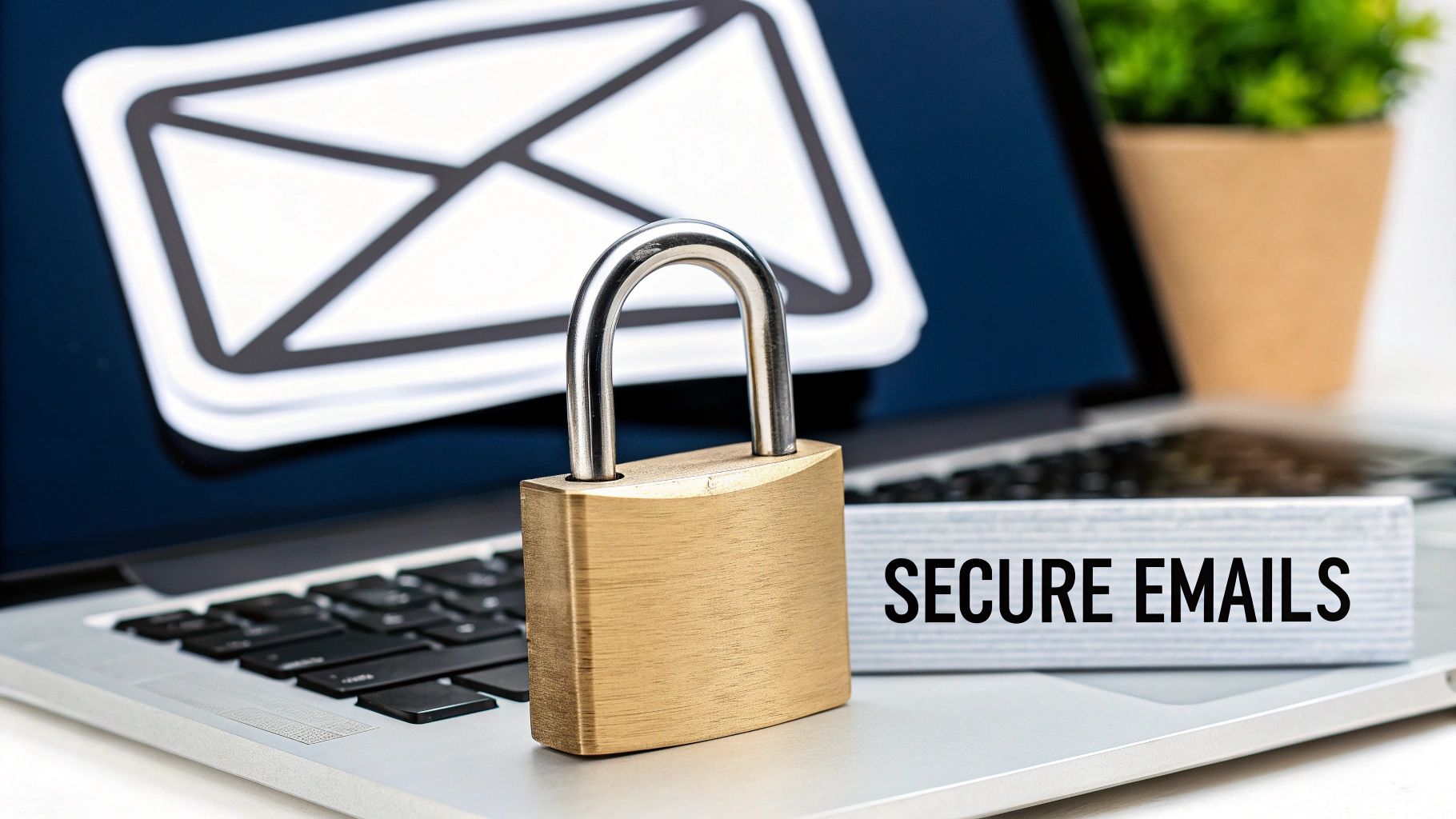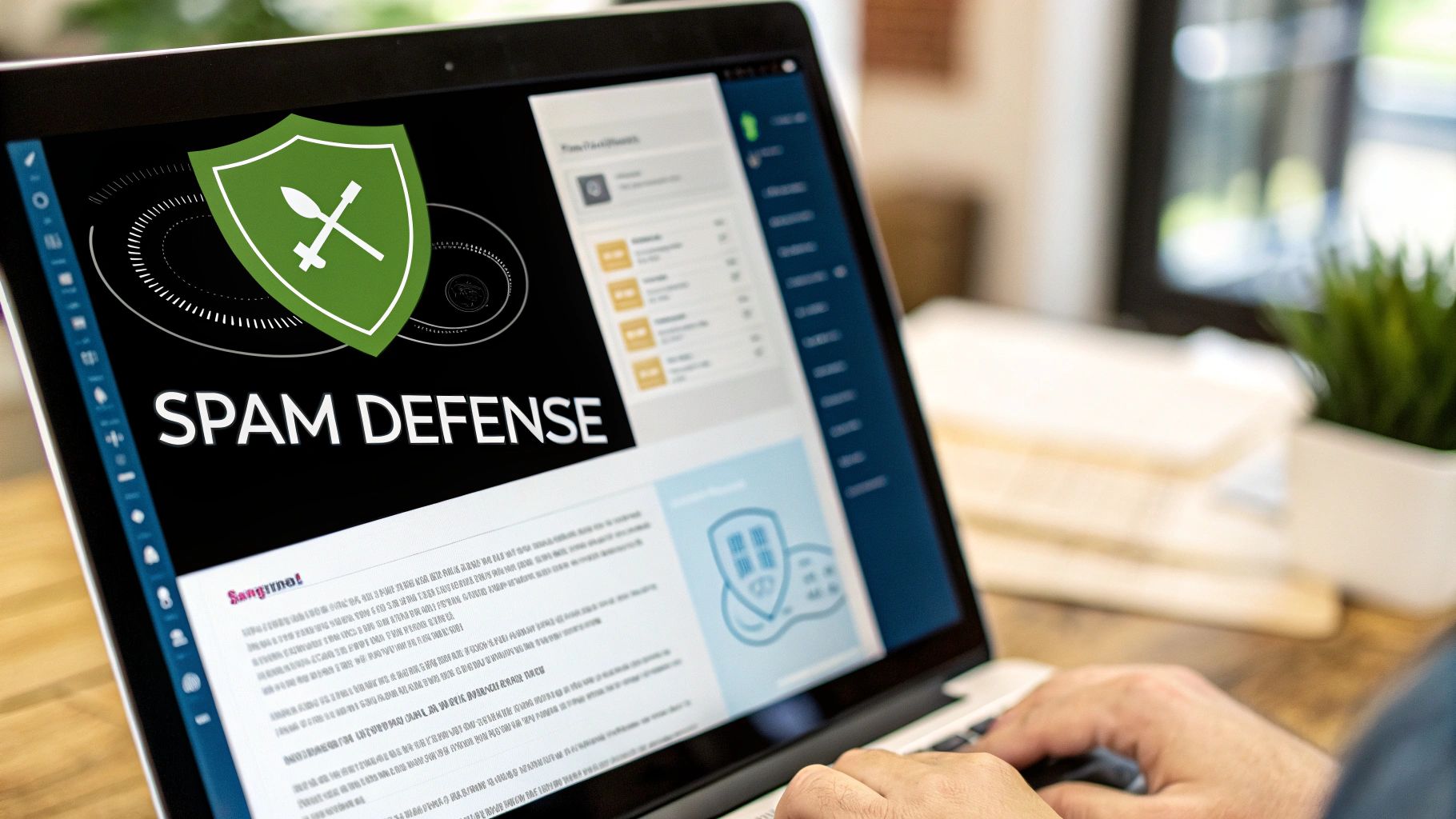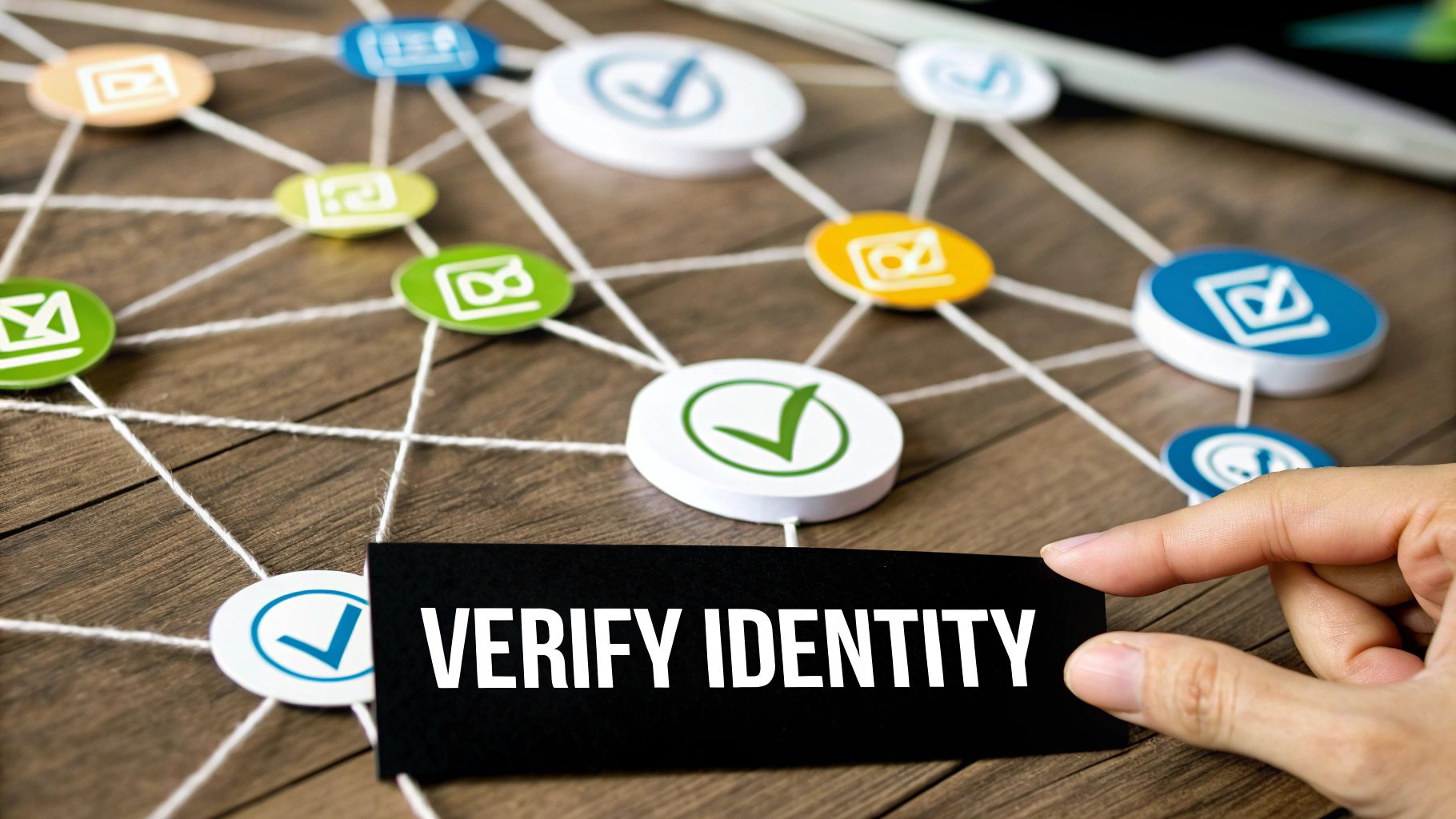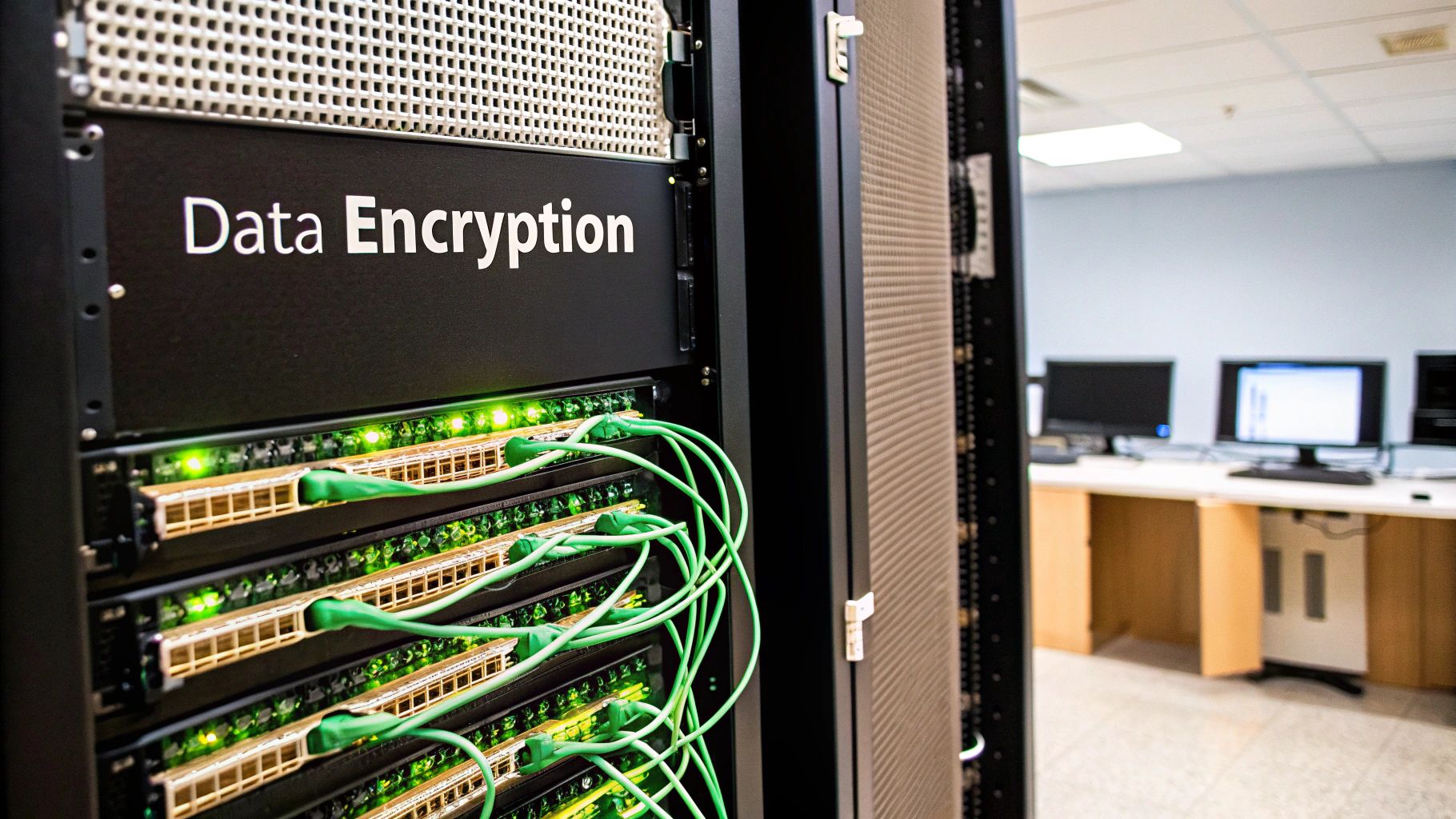The Evolution of Email Authentication: From Chaos to Control
The early days of email were marked by a serious security gap. Without proper email authentication, anyone could pretend to be someone else when sending messages. This created perfect conditions for spam, phishing scams, and other email-based attacks that hurt both individuals and organizations. The lack of security measures made it clear that standardized protections were needed.
The Rise of Email Authentication Standards
To address these security issues, experts developed the first email authentication protocols. Rather than just reacting to attacks after they happened, these tools helped prevent malicious emails from reaching inboxes in the first place.
The introduction of three key protocols changed email security forever: Sender Policy Framework (SPF), DomainKeys Identified Mail (DKIM), and Domain-based Message Authentication, Reporting & Conformance (DMARC). SPF and DKIM emerged in the early 2000s, with SPF allowing receivers to check if an email came from an approved sender. By 2018, these protocols were widely used to fight email fraud. Yet adoption remains incomplete – a 2023 study found that while 55.4% of senders use SPF, 12.8% don't, and 31.8% aren't sure. Learn more about adoption rates at Email Authentication Protocols.
Modern Email Authentication: A Multi-Layered Approach
Today's email authentication uses multiple protocols working together. Think of it like home security – SPF acts as the front door lock, DKIM adds a security system, and DMARC provides instructions for handling break-in attempts. Each layer makes it harder for attackers to succeed.
This combination of security measures helps ensure legitimate emails reach recipients while blocking fraudulent messages. For businesses that rely on email communication, using these authentication methods properly is essential for maintaining customer trust and protecting sensitive information. The protocols work together to verify sender identity and filter out potentially dangerous messages before they can do harm.
Mastering Core Authentication Protocols: SPF, DKIM, and DMARC Explained
Email authentication methods work together to protect against email spoofing and phishing attacks. Understanding how each protocol works and contributes to email security helps create strong protections for your organization's email communications.
Sender Policy Framework (SPF)
SPF serves as your first defense against email fraud. This protocol identifies which servers can legitimately send emails from your domain. It works like a bouncer checking IDs at the door – if an email claims to be from your domain, SPF verifies that it came from an approved server. This stops impersonators from sending fake emails that appear to be from your organization.
DomainKeys Identified Mail (DKIM)
DKIM adds encryption to protect your emails. When you send an email, DKIM applies a unique digital signature that proves the message is authentic and unchanged. If someone tries to modify the email contents after sending, the signature becomes invalid and alerts the recipient. This verification ensures recipients can trust that emails truly came from your domain.
Domain-based Message Authentication, Reporting & Conformance (DMARC)
DMARC combines SPF and DKIM into a complete security system. This protocol lets domain owners set rules for handling emails that fail authentication checks. You can tell receiving servers to quarantine or reject suspicious messages outright. DMARC also provides detailed reports on authentication failures so you can spot problems and improve your security.
The Synergy of SPF, DKIM, and DMARC
While each protocol is useful on its own, they work best together as a complete email security system. SPF validates sending servers, DKIM ensures message integrity, and DMARC enforces security policies and provides monitoring. This multi-layered approach gives you strong protection against phishing while maintaining good email delivery rates. You might be interested in: How to master email….
Using all three protocols – SPF, DKIM and DMARC – creates the strongest email security. This combination blocks fraudulent messages and builds trust with recipients, leading to better inbox placement and brand protection. Regular monitoring and updates help organizations get the most benefit from these essential email authentication tools.
Implementation Strategies That Drive Results
Building effective email authentication requires a structured approach and attention to detail. By understanding SPF, DKIM, and DMARC protocols and their interactions, you can create a robust framework for email security. Regular monitoring and upkeep are essential parts of maintaining this framework.
Planning Your Implementation
Start by thoroughly examining your current email setup. This means making a complete list of all email-sending sources and mapping out your email flows. You'll need to document which servers handle your outgoing mail, track email volumes, and categorize email types (like marketing versus transactional messages). Having this clear picture is key for proper authentication setup.
Phased Rollout for Smooth Transitions
Setting up email authentication works best as a gradual process. Begin with a monitoring-only DMARC policy (p=none) to watch your email patterns and spot any authentication problems without affecting delivery. As you build confidence in your setup, you can strengthen your DMARC policy first to p=quarantine and then to p=reject. This careful approach helps prevent legitimate emails from being blocked.
Managing Technical Challenges
You'll likely face some technical hurdles during setup. Common issues include aligning SPF and DKIM records with all your approved sending sources. Making sense of DMARC reports can also be tricky. Good monitoring tools and expert help can make these challenges much easier to handle.
Maintaining Business Continuity
Since email is vital for most companies, avoiding disruptions during implementation is crucial. This means testing thoroughly at each stage, having support ready when needed, and keeping a backup plan handy. These precautions help keep your email flowing smoothly throughout the setup process. Read also: How to master…
Ongoing Monitoring and Optimization
After implementation, keep a close eye on performance. Check DMARC reports regularly to catch any new authentication issues, track attempts at spoofing, and ensure your protections stay strong. This watchful approach helps you adapt to new threats while maintaining strong email security. Regular monitoring helps you get the most value from email authentication by protecting your brand and keeping emails flowing to inboxes.
Maximizing Email Deliverability Through Authentication
Email authentication does more than protect your messages – it helps them reach inboxes reliably. When you authenticate your emails properly, you build trust with email providers and improve your sender reputation. This means more of your messages make it to recipients' inboxes instead of spam folders.
How Authentication Impacts Deliverability
Gmail and Outlook use advanced filtering to screen incoming mail. Email authentication is one of the key factors they check. When your emails are properly authenticated, these providers see them as trustworthy and legitimate communications. This trust directly affects whether your messages land in the inbox.
Think of sender reputation like a credit score for email – the better your score, the more likely your messages will be delivered. You build this reputation steadily through good practices like implementing SPF, DKIM and DMARC authentication. With a strong reputation, you'll see fewer bounces and better results from your email campaigns.
Recent changes by Google and Yahoo in 2024 show just how vital authentication has become. In just the first 60 days of 2024, 2.5 million domains started using authentication, leading to 265 billion fewer unauthenticated messages. Learn more about authentication's impact from Valimail.
Measuring Authentication Success
To ensure your authentication is working, track key metrics regularly. DMARC reports are essential – they show which emails pass or fail authentication and help identify problems. By reviewing these reports, you can spot issues early and optimize your authentication setup.
Your email bounce rate is another important metric to watch. High bounce rates often point to authentication problems or other deliverability issues. Keep an eye on both bounces and spam complaints – lower rates in both areas indicate your authentication is working well and your sender reputation is healthy.
Best Practices for Maintaining High Deliverability
Smart companies make email authentication central to their email strategy. They regularly check and update authentication records to match their sending practices. They closely monitor DMARC reports and fix any problems quickly. This focused attention helps maintain their sender reputation and keeps emails flowing to inboxes reliably. When organizations commit to proper authentication long-term, they build trust with both email providers and recipients.
Building Robust Authentication Monitoring Systems
Setting up email authentication methods like SPF, DKIM, and DMARC is just the start. To keep your email system secure, you need to check and adjust it regularly. This means keeping track of how well it's working, looking at reports, and making changes when needed.
Why Monitoring Matters
Checking your email authentication setup is important for several key reasons. It shows you if your security measures are working properly – are they stopping fake emails while letting real ones through? Regular monitoring helps spot any weak points that attackers might try to use. It also proves to others that you take email security seriously, which helps build trust and improve your reputation as a sender.
Key Components of an Effective Monitoring System
A good monitoring system usually includes these main parts:
- DMARC Report Analysis: These reports tell you how your email traffic is doing. They show which emails pass or fail security checks, helping you find and fix problems. For example, if many emails suddenly start failing, it could mean something's wrong with your setup or someone's trying to fake your emails.
- Authentication Failure Alerts: Set up warnings for when emails fail security checks. This helps you catch and fix problems quickly, before they hurt your ability to deliver emails.
- Deliverability Tracking: Watch important numbers like bounce rates and spam complaints. If these numbers go up suddenly, it might mean you have an authentication problem.
- Security System Integration: Connect your email monitoring with other security tools to get a complete picture of what's happening. This helps catch complex attacks you might otherwise miss.
Best Practices for Authentication Monitoring
Follow these tips to make your monitoring more effective:
- Check DMARC Reports Often: Don't just collect these reports – look at them carefully. Regular checks help you spot patterns and unusual activity.
- Set Up Automatic Alerts: Make sure you get warnings right away when important security checks fail.
- Look at the Big Picture: Compare your email security data with other information, like website visits and user activity, to better understand possible threats.
Learn more in our article about How to master…. By watching your email authentication carefully, you turn it from a simple setup into an active shield that adapts to new threats and keeps your email communications safe. This careful approach protects your reputation, helps more of your emails get delivered, and guards against email attacks.
Preparing for the Next Wave of Authentication Innovation
Email authentication methods like SPF, DKIM, and DMARC provide solid security foundations today. But as threats keep evolving, we need to look ahead and get ready for what's next in email authentication. Let's explore some key trends shaping the future of email security.
The Role of Artificial Intelligence
Artificial intelligence is set to enhance email authentication in powerful ways. AI systems can spot subtle patterns and anomalies that basic checks might overlook – like detecting when a verified account starts sending emails in unusual ways that could indicate compromise. This intelligent monitoring adds an extra security layer beyond standard SPF, DKIM and DMARC validation.
Blockchain and Decentralized Authentication
Blockchain technology offers exciting possibilities for more secure, transparent authentication. Instead of relying on central authorities, blockchain could enable email verification through distributed networks. This makes the system harder to manipulate and removes single points of failure. While blockchain authentication is still emerging, it shows real promise for the future.
The Rise of Passwordless Authentication
We all know passwords have major security flaws. As companies move away from passwords, email authentication will need to adapt. Biometric authentication and hardware security keys are becoming more common and will likely integrate with email platforms soon. The focus is shifting from what you know (passwords) to what you have (security keys) or who you are (biometrics).
Preparing Your Organization for the Future
To stay ahead with email authentication, organizations should:
- Stay Informed: Follow industry updates, go to security conferences, and connect with email security experts
- Test New Solutions: Evaluate emerging authentication methods to see if they fit your needs
- Run Pilot Programs: Try new technologies in controlled settings before full rollout
- Train Your Team: Make sure IT staff understand how to implement and manage new authentication systems
Taking a proactive approach helps ensure your email security stays strong as technology advances.
Looking to improve your email verification today? EmailAddress.ai delivers 98% accurate verification to help your emails reach real inboxes. Visit us to boost your email deliverability.





